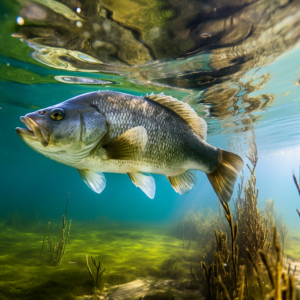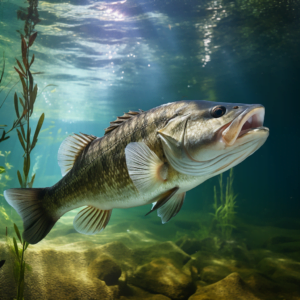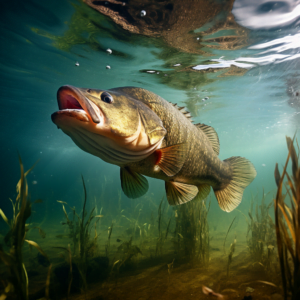Have you ever wondered if it’s safe to eat black sea bass raw? Raw fish can be a delicacy in certain cuisines, but it’s important to consider the potential risks involved. In this article, we will explore the safety of consuming raw black sea bass and provide you with the information you need to make an informed decision.
When it comes to consuming raw seafood, there are a few factors to consider. One of the main concerns is the risk of foodborne illness, particularly from parasites and bacteria that can be present in raw fish. These pathogens can cause a range of symptoms, from mild digestive issues to more serious complications. Additionally, the quality and freshness of the fish are crucial in determining its safety for raw consumption.
In the specific case of black sea bass, it is generally considered safe to eat raw if it is properly handled and prepared. However, there are still some precautions that should be taken. It is important to ensure that the fish has been properly frozen before consuming it raw, as freezing can help kill any potential parasites. Additionally, the fish should be sourced from a reputable supplier to ensure its freshness and quality.
In the next section, we will delve deeper into the potential risks associated with consuming raw black sea bass and explore the proper techniques to ensure its safety. Whether you’re a fan of sashimi or simply curious about raw seafood, this article will provide you with valuable insights into the safety of eating raw black sea bass.
Introduction to raw black sea bass consumption
Black sea bass is a popular fish known for its delicate flavor and tender flesh. While this fish is commonly cooked and enjoyed in various dishes, such as grilling, baking, or pan-searing, there is also a growing trend of consuming it raw. Raw fish dishes, like sushi or sashimi, have gained popularity in recent years, and black sea bass is often featured in these preparations. However, before indulging in this culinary trend, it is crucial to understand the potential health benefits and risks associated with consuming raw black sea bass.
Health benefits of raw black sea bass
Consuming raw black sea bass can provide several health benefits. Like other species of white fish, black sea bass is a rich source of high-quality protein. Protein is essential for maintaining and repairing body tissues, supporting the immune system, and promoting healthy hair, skin, and nails. Additionally, black sea bass is low in fat and calories, making it an excellent choice for individuals watching their weight or trying to maintain a healthy diet.
The high omega-3 fatty acid content in black sea bass is another notable health benefit. Omega-3 fatty acids are good fats that are known to reduce inflammation, improve cardiovascular health, and support brain function. These fatty acids have been linked to a lower risk of heart disease and may even play a role in reducing the risk of certain types of cancers. By consuming raw black sea bass, you can obtain a good dose of these beneficial omega-3 fatty acids.
Potential risks of eating raw black sea bass
While there are clear benefits to consuming raw black sea bass, it is essential to note that there are potential risks associated with eating raw fish in general. Raw fish can harbor parasites and bacteria that may pose health risks if not properly handled or prepared.
Parasites and bacteria in raw black sea bass
One of the primary concerns when consuming raw black sea bass is the presence of parasites. Some common parasites found in fish, such as tapeworms or roundworms, can cause health issues when ingested by humans. These parasites are typically killed by proper cooking methods, but consuming raw fish increases the risk of coming into contact with them.
Bacteria, such as salmonella or vibrio, are also potential concerns when consuming raw fish. These bacteria can cause foodborne illnesses and lead to symptoms like nausea, vomiting, stomach cramps, and diarrhea. However, it is important to note that the risk of bacterial contamination in black sea bass is relatively low compared to other fish species.
Methods of preparing raw black sea bass safely
To minimize the risks associated with consuming raw black sea bass, it is crucial to follow proper preparation methods. The first step is to ensure that the fish is fresh and of high quality. This can be done by purchasing from reputable sources or fish markets that adhere to strict hygiene and storage practices.
Once you have obtained fresh black sea bass, proper handling and storage are essential. It is recommended to keep the fish refrigerated at temperatures below 40°F (4°C) until you are ready to consume it. Additionally, it is important to use clean utensils and cutting boards to prevent cross-contamination with other foods.
To further reduce the risk of parasites and bacteria, some individuals choose to freeze black sea bass before consuming it raw. Freezing the fish at temperatures below -4°F (-20°C) for at least seven days can help kill parasites. However, it is important to note that freezing may not eliminate all types of parasites, and it does not kill bacteria.
Tips for selecting fresh black sea bass for raw consumption
When selecting black sea bass for raw consumption, there are a few key indicators of freshness to look for. The fish should have clear, bright eyes that are not sunken or cloudy. The gills should be bright red or pink, indicating its recent capture. The skin should be firm and shiny, with no signs of discoloration or sliminess. Additionally, a fresh black sea bass will have a mild, slightly sweet smell, free from any strong or fishy odors.
Popular raw black sea bass dishes
Raw black sea bass can be enjoyed in various popular dishes, often found in Japanese cuisine. Sushi and sashimi are two well-known ways to enjoy raw fish, including black sea bass. Sushi typically consists of black sea bass served atop seasoned rice, while sashimi features thinly sliced black sea bass served on its own, accompanied by soy sauce and wasabi. These dishes highlight the delicate flavors and texture of the fish, allowing its natural taste to shine.
Expert opinions on eating raw black sea bass
Opinions on the safety of consuming raw black sea bass can vary among experts. Some argue that with proper handling, sourcing, and preparation, the risks associated with raw consumption can be mitigated. They believe that the health benefits of consuming omega-3 fatty acids and high-quality protein outweigh the potential risks of parasites or bacteria.
However, others take a more cautious approach and advise against eating raw black sea bass or any raw fish unless it has been frozen to kill potential parasites. They argue that the risks associated with consuming raw fish are not worth the potential health benefits, especially considering the availability of other cooked fish options that offer similar nutritional benefits.
Precautions and considerations for consuming raw black sea bass
If you choose to consume raw black sea bass, it is essential to take extra precautions to minimize the risks. Individuals with compromised immune systems or underlying health conditions should exercise caution and consult with a healthcare professional before consuming raw fish. Pregnant women, in particular, are advised to avoid raw fish due to the potential risks of bacterial contamination.
Furthermore, it is important to consume raw black sea bass from reputable sources that adhere to strict food safety guidelines. If you are uncertain about the quality or freshness of the fish, it is best to err on the side of caution and opt for cooked preparations instead.
Conclusion
In conclusion, the safety of consuming raw black sea bass depends on various factors, including proper handling, sourcing, and individual health considerations. While raw black sea bass offers health benefits such as high-quality protein and omega-3 fatty acids, it is essential to be aware of the potential risks associated with parasites and bacteria. By following proper preparation methods, selecting fresh fish, and considering expert opinions, you can make an informed decision about whether to include raw black sea bass in your culinary repertoire. Remember, when it comes to consuming raw fish, it is always better to be safe than sorry.




